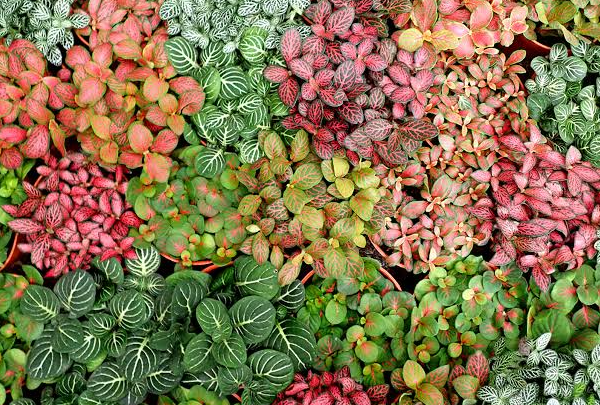Caring for the Fittonia
Transforming your space into a vibrant oasis is easier than you think, and the Fittonia plant can help. With its lush green leaves adorned with striking white or pink veins, this beautiful houseplant instantly adds a splash of color and life to any room. Also known as the nerve plant, Fittonia thrives indoors, making it a favorite among plant lovers and decorators. In this comprehensive guide to caring for Fittonias, you'll learn everything you need to know to keep your new botanical companion healthy and thriving. From understanding light and water needs to propagation tips, caring for Fittonias isn't just rewarding; it's an art. Whether you're an experienced plant parent or just starting your indoor gardening adventure, this vibrant beauty will bring joy and serenity to your home. Let's dive into the basics of caring for Fittonias and discover how to get the most out of this beautiful houseplant!
In this blog you can read all about caring for the Fittonia, both in a terrarium and in a pot.
Origin
The Fittonia is native to the rainforests of South America, primarily Peru. There, the plant grows on the forest floor, where light is filtered by the canopy and humidity is high. These natural conditions are important to replicate when caring for it.
Location
The Fittonia likes a light spot, but not direct sunlight.
Too much sunlight can discolour or burn the leaves, while too little light makes the leaf markings less visible.
Recommended location:
-
Partial shade or filtered daylight
-
Temperature between 18 and 24°C
-
Avoid cold drafts and sudden temperature changes
Watering
The Fittonia likes a slightly moist soil, but cannot tolerate wet feet.
Allow the top layer of soil to dry slightly before watering again.
Tips:
-
Preferably use rainwater or lukewarm, low-limescale water.
-
Give small amounts of water, but regularly.
-
In a terrarium, additional water is often not necessary; the closed system regulates the moisture balance itself.
Humidity
Fittonia needs high humidity (around 70%).
In dry air the leaves may droop or develop brown edges.
Solutions:
-
Place the plant in a closed terrarium.
-
If the plant is in a pot, spray it occasionally with a plant sprayer.
-
Do not place the plant next to a heater or air conditioner.
Power supply
During the growing season (spring and summer), give the Fittonia a light dose of plant food once a month.
Use a green houseplant food , diluted to half the recommended strength.
In a terrarium, feeding is usually not necessary, as the ecosystem itself recycles nutrients.
Pruning and maintenance
The Fittonia grows low and spreading.
To keep the plant compact, you can carefully cut back long stems.
This encourages new, dense growth.
Tip:
Remove yellow or damaged leaves regularly to keep the plant healthy.
Fittonia in a closed terrarium
The Fittonia is very suitable for use in a closed terrarium.
The high humidity and constant temperature are consistent with its natural habitat.
Points of interest:
-
Provide indirect light.
-
Do not place the plant too close to the glass to prevent mold formation.
-
Trim the plant if it grows too large.
Common problems
| Problem | Cause | Solution |
|---|---|---|
| Limp leaves | Too little water or too dry air | Spray lightly or increase humidity |
| Yellow leaves | Too wet soil | Reduce watering and check drainage |
| Dull leaf color | Not enough light | Move to a brighter spot (not direct sunlight) |
| Leaf tips brown | Too dry air or cold draft | Place away from drafts, increase humidity |
Conclusion
The Fittonia is a decorative and low-maintenance plant, provided it gets sufficient moisture and indirect light.
It is an ideal species for terrariums because of its preference for constant, humid conditions.
With proper care, the Fittonia will remain healthy for years and retain its characteristic leaf pattern.
📍 The Green Bottle Garden
Specializing in luxurious handmade terrariums with carefully selected tropical plants such as Fittonia.
Click here for our offer or contact us for a custom terrarium.

Share:
Open terrarium vs. closed terrarium: what are the differences and how do you care for them?
Amaryllis Bulb Without Water: Tips for a Flowering Plant Without Too Much Care | the perfect plant gift